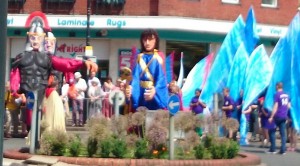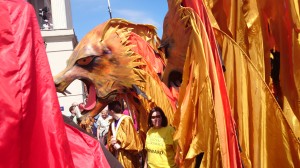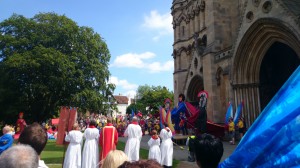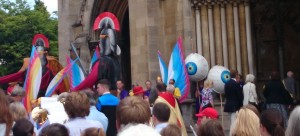On Saturday 21 June, some of us were in St Albans for the Alban Pilgrimage. In its contemporary manifestation, this involves a festive procession through the city centre accompanied by troops of children dressed as Romans and roses. As the pilgrims process, the drama of Alban’s martyrdom is enacted by a host of giant puppets. Characters in the pageant include the renegade priest Amphibalus, his self-sacrificing convert Alban, a merciless judge, a pair of Roman soldiers, and some historically dodgy lions. In other years, the appearance of a miraculous spring to quench the Saint’s thirst at the place of execution has been re-enacted with the help of the Fire Department; this year, though, the FBU were on strike.
The pilgrimage seems to grow in scale and popularity from year to year. But how old is the tradition? When were the puppets introduced? When did it become an event for tourists and the St Alban’s populace, as well as self-designated pilgrims? What explicit and implicit negotiations between cathedral and city lie behind the current event, which serves as a celebration of both? And who thought up the bit with the eyeballs?




